Why Gate Valves Leak and How to Fix It
Gate valves are essential components widely used in various fluid pipelines, with their stable performance and reliability playing a crucial role in ensuring industrial production. However, in practical use, gate valve leakage is a challenging issue that may lead to fluid loss, environmental pollution, and equipment damage. This article explores several common causes of gate valve leakage and corresponding solutions.
Packing Leaks: Causes and Maintenance Methods
1.Packing WearThe packing in gate valves is crucial for preventing fluid leakage, but prolonged use or improper operation can cause wear. Severely worn packing cannot effectively seal the fluid, resulting in leakage.
Maintenance Methods:Straighten or repair bent or worn valve stems. Replace severely damaged rubber rings promptly.Inspect the gland, bolts, and other components, and replace or repair damaged packing seal parts.To extend the packing's service life, regularly check for signs of wear and replace the packing when necessary.
2.Loose Packing GlandThe packing gland is responsible for compressing the packing to ensure a tight seal. If the packing gland becomes loose, the packing cannot be effectively compressed, leading to leakage.
Maintenance Methods:Tighten the packing gland.Regularly inspect the packing gland tightness and tighten it as needed to ensure proper sealing.
3.Packing AgingPacking exposed to environmental factors such as temperature and humidity over time may degrade. Aging packing loses its sealing performance, increasing the risk of leakage.
Maintenance Methods:Replace the aged packing with new, high-quality packing.To slow the aging process, choose high-quality packing during installation and maintain a suitable operating environment.
Seal Face Leaks: Causes and Maintenance Methods
1.Seal Face DamageThe seal faces of a gate valve include the sealing surfaces between the valve cover and body, as well as between the piston and seat ring. Wear, damage, or deterioration of these surfaces can lead to leakage.
Maintenance Methods:Inspect the extent of the damage. For minor damage, repair can be performed using adhesive bonding, grinding, or polishing.For severe damage, replace the seal face components with new ones.
2.Seal Structure FailureSeal structures such as springs or O-rings may degrade, deform, or creep due to prolonged use or poor material quality, leading to a loss of sealing performance.
Maintenance Methods:Replace the failed sealing components with new ones.conduct a detailed inspection and analysis of the failed parts before replacement to prevent recurrence of similar issues.
3.Improper Selection of Seal MaterialsThe choice of seal material is critical. If the material does not match the characteristics of the medium, it may corrode, oxidize, or degrade during operation, resulting in leakage.
Maintenance Methods:Select suitable seal materials in advance based on the operating medium and environment.If leakage is caused by inappropriate material selection, replace the seals promptly with materials that are better suited to the specific conditions.
Closing Element Leaks: Causes and Maintenance Methods
1.Incomplete Valve ClosureWhen a gate valve fails to close tightly, it can compromise the sealing performance at the packing, resulting in fluid leakage. This may be caused by valve jamming, deformation, or other issues.
Maintenance Methods:Inspect the valve for blockages or deformation and perform the necessary repairs.Conduct regular valve opening and closing tests to ensure proper operation and address faults promptly.
2.Improper OperationIncorrect handling, such as excessive force or overly rapid opening and closing, can cause impact and wear on the packing, leading to leaks.
Maintenance Methods:Ensure operators receive professional training and are familiar with the correct operation methods for gate valves.Avoid excessive force and abrupt movements to prevent damage to the valve components.
3.Leakage Caused by Actuator MalfunctionGate valve operation is controlled by actuators, which rely on liquid, gas, electricity, or other energy sources. These actuators, using motors, cylinders, or similar mechanisms, drive the valve to fully open or close. If the actuator fails to fully open or close the valve, internal leakage may occur.
Maintenance Methods:Adjust the actuator's zero position to ensure it can drive the valve to the fully open or fully closed position accurately.
External Leakage from Valve Body Defects: Causes and Maintenance Methods
Valve bodies made through casting are prone to defects such as porosity, slag inclusion, cracks, and sand holes. Welding issues and stress cracks are also common defects. If these issues are not detected during manufacturing or are improperly addressed, external leakage may occur during operation.
Maintenance Methods
1.Inspection and Evaluation:Assess the valve body defects to determine their nature. Through-cracks, penetrating defects, and shrinkage exceeding a certain area are not repairable. In such cases, the valve body must be returned to the factory for replacement.
2.Repairable Defects:For defects that can be repaired through welding, develop an appropriate welding procedure. This should include selecting the welding method, electrode material, and post-weld stress-relief treatment.
Perform non-destructive testing (NDT) on the welded areas to ensure the repair meets the required standards.
Improve casting quality during production.Conduct mandatory strength tests before installation to identify potential defects.
For valve bodies and covers made with welded components, follow established welding operation procedures, and perform post-weld testing, such as flaw detection and strength tests, to ensure reliability.

Image source: Internet
Gate Valve Maintenance
To ensure long-term use of gate valves, aside from the valve’s inherent factors, it is crucial to maintain operation in a suitable environment. Below are recommendations for ideal working environments and maintenance practices based on the valve material:
1.Carbon Steel Gate ValvesCorrosion Risks: Carbon steel is prone to corrosion in humid or acidic environments, especially in corrosive mediums like acids, alkalis, and salts.
Preventive Measures:Regularly apply anti-corrosion coatings or use corrosion-resistant paint on the valve's surface.Limit the working temperature to below 425°C.Perform routine inspections for rust or damaged coatings, and reapply protective layers as needed.
2.Stainless Steel Gate ValvesAvoid Chloride Exposure: While stainless steel is corrosion-resistant, it is susceptible to pitting corrosion in chloride-containing environments.
Preventive Measures:Regularly inspect for signs of corrosion, especially in chloride-heavy conditions.Conduct periodic passivation treatments to enhance corrosion resistance.
3.Cast Iron Gate ValvesRust Prevention: Cast iron is vulnerable to rust in humid environments due to exposure to moisture and oxygen.
Preventive Measures:Apply anti-rust paint on the surface and avoid prolonged storage in damp conditions.Regularly check and repair protective coatings to prevent damage from surface corrosion.Limit working temperatures to below 250°C, as cast iron has poor high-temperature resistance.
4.Bronze and Brass Gate ValvesOxidation Risks: Copper alloys are prone to oxidation, forming patina (green copper).
Preventive Measures:Apply anti-oxidation coatings to prevent surface oxidation.Keep working temperatures below 250°C, as higher temperatures may lead to softening or deformation.
Summary
This article aims to help you understand the common causes of gate valve leaks and encourage regular inspections to reduce or prevent issues. Timely repairs can extend the valve’s service life and improve its efficiency.
If you're looking for a reliable gate valve supplier, contact Union Valve. We offer professional quality testing labs to ensure product reliability and safety.
Related Article:
- Characteristics of Resilient Seated Gate Valve and Their Differences from Metal Sealing Gate Valves
- Choosing the Right Valves for Efficient Water Supply Systems
- Everything You Need to Know About Knife Gate Valves
- What Is The Difference Between Wedge-Type Gate Valve And Slab Gate Valve?

-
Posted in
Gate valve, Gate valve leakage, Gate valve maintenance



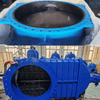

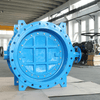
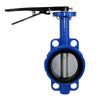
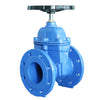
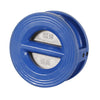
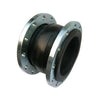
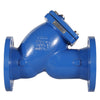
Very nice blog